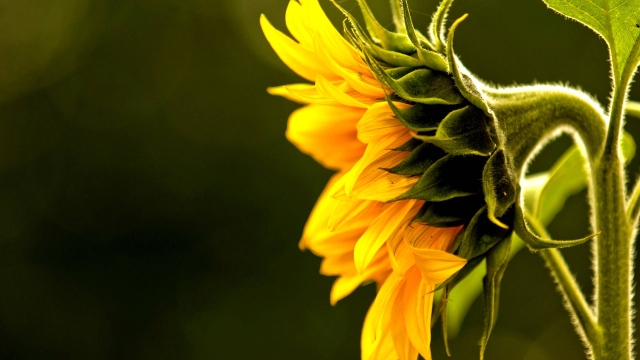
Unleashing the Sunflower Harvest: Fighting Off Cabbage Worms
As the sunflowers bloom and their golden petals dance in the gentle breeze, a hidden threat lurks amidst their vibrant glory. Cabbage worms, those pesky pests, pose a challenge to the bountiful harvest we seek. These voracious creatures have an appetite for destruction, feasting upon the tender leaves and depleting the vitality of our sunflowers. But fear not, for in this article, we shall uncover the secrets to protect our precious blooms and unleash the sunflower harvest we all yearn for.
Cabbage worms, also known as imported cabbage worms, are the larvae of white butterflies that have found their way into our sunflower fields. These caterpillars are known for their insatiable hunger and their ability to swiftly devour the foliage, leaving behind a path of devastation. They can quickly multiply in number, causing significant damage to our sunflowers if left unchecked.
However, there are measures we can take to fight off these cabbage worms and safeguard our sunflower harvest. By implementing proven organic pest control techniques, we can maintain the balance between nature and our crops. Join us on this journey, as we explore natural remedies, innovative strategies, and preventive measures to combat these unwanted guests and maintain the integrity of our sunflower fields. Together, we shall unleash the sunflower harvest, free from the clutches of cabbage worms, and witness a breathtaking spectacle of nature’s beauty.
Understanding Cabbage Worms
Cabbage worms are common pests that can have a detrimental impact on sunflower harvests. These tiny green worms often feed on the leaves of sunflower plants, causing significant damage if not properly controlled.
Cabbage worms are actually the larvae of a type of moth known as the cabbage white butterfly. These butterflies lay their eggs on the undersides of sunflower leaves, and once hatched, the hungry larvae begin to consume the foliage.
The feeding activity of cabbage worms can weaken sunflower plants, stunt their growth, and even lead to reduced yield during harvest time. Therefore, it is crucial for sunflower farmers to understand the behavior and control methods for these persistent pests in order to protect their harvests.
Protecting Sunflowers from Cabbage Worms
Sunflower crops can often be plagued by cabbage worms, which can cause significant damage to the plants if not managed properly. These pesky pests have a voracious appetite and can quickly devour the leaves and stems of sunflowers. However, there are several effective methods to protect your sunflowers from these destructive insects.
When To Harvest Sunflowers
First and foremost, one of the most natural ways to deter cabbage worms is by introducing beneficial insects into your garden. For instance, releasing trichogramma wasps can be highly effective in controlling the population of cabbage worms. These tiny wasps are parasitic and lay their eggs inside the eggs of cabbage worms, ultimately killing them before they hatch. By introducing trichogramma wasps into your sunflower field, you can significantly reduce the risk of an infestation.
Another strategy to protect your sunflowers is by implementing physical barriers. Covering your sunflowers with floating row covers can create a protective barrier that prevents cabbage worms from reaching the plants. These covers are lightweight and allow sunlight, air, and water to pass through while keeping pests at bay. Ensure the covers are tightly secured to prevent any gaps that the worms can squeeze through.
Lastly, practicing good garden hygiene is crucial for cabbage worm prevention. It’s essential to keep the garden area clean and remove any debris or fallen leaves regularly. Cabbage worms often lay their eggs on the undersides of leaves or in soil near sunflowers, so eliminating their potential breeding grounds can significantly reduce their numbers. Additionally, rotating your sunflower crops each year can help disrupt the life cycle of cabbage worms and limit their impact.
By utilizing these protective measures, you can effectively defend your sunflowers against cabbage worms and ensure a bountiful harvest.
Optimizing Sunflower Harvest
In order to optimize the sunflower harvest and ensure a bountiful yield, it is important to take proactive measures against cabbage worms. These pests have a tendency to damage the sunflowers and hinder their growth. By adopting certain strategies, we can effectively protect our sunflowers while enjoying a successful harvest.
One effective method to combat cabbage worms is through the use of natural predators. Introducing beneficial insects, such as parasitic wasps or ladybugs, can help control the population of cabbage worms. These helpful creatures feed on the larvae of cabbage worms, reducing their numbers and minimizing the damage to the sunflowers. It is crucial to carefully research and select the appropriate predatory insects for your specific region and sunflower variety.
Furthermore, implementing crop rotation practices can also prove beneficial in the fight against cabbage worms. By alternating the planting locations of sunflowers with other crops that are less susceptible to cabbage worm infestations, we can disrupt their life cycle and reduce the risk of damage. This technique minimizes the likelihood of cabbage worms finding suitable host plants, thereby safeguarding our sunflowers and maximizing their potential yield.
To conclude, cabbage worm infestations can greatly impact the health and productivity of sunflowers. However, by utilizing natural predators and implementing crop rotation practices, we can effectively combat these pests and optimize our sunflower harvest. By taking proactive measures, we ensure that our sunflowers thrive and reward us with a plentiful bounty.



